Corn is a cereal grain that is the most widely planted commercial crop in America. Corn is a part of our everyday lives. It accounts for almost 10 percent of worldwide plantings, and almost 5 percent of all agricultural land usage. Is corn bad for the environment?
Corn requires large amounts of fertilizers and pesticides to grow properly, producing both soil erosion and water pollution from runoff. In addition, modern corn crops are genetically modified with DNA from other species, making corn highly resistant to diseases.
This has led to increased use of fertilizers and pesticides to achieve commercial corn crops production levels to achieve market prices on the corn industry.
What is corn?
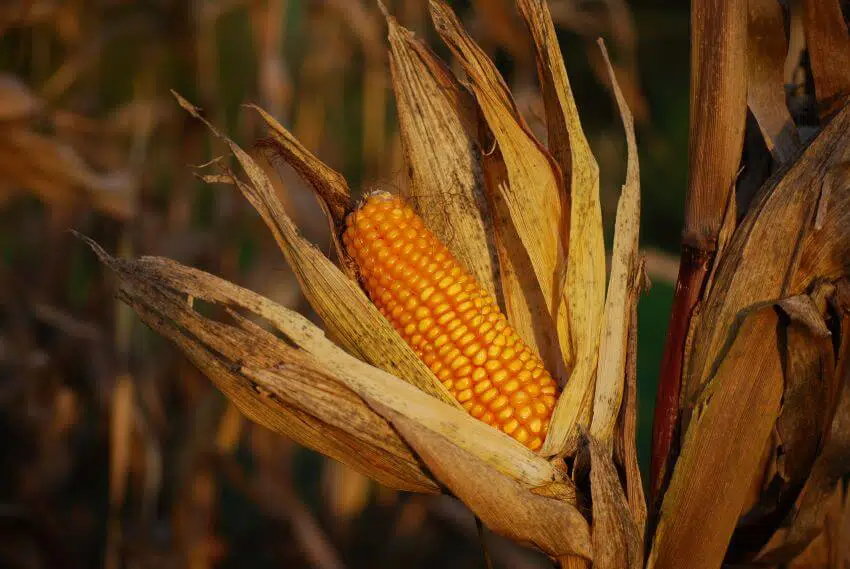
Corn is a cereal grain that is highly valued by humans for its high starch content. Corn is being used globally. It is used to produce many common food and industrial products such as corn-based ethanol, corn oil, corn syrup, corn starch, corn cereals, corn-made alcoholic beverages, corn-made paper towels, and corn-made adhesives.
Corn is the world’s second most important cereal crop after wheat, and is one of the first domesticated crops; humans have harvested corn for 9,000 years.
See Related: Best Books on Sustainable Living
How much corn is consumed daily?

On a global scale, 4.5 percent of all corn is consumed daily, in the form of food and industrial food products by the human population. In the United States alone, 3 times as much weekly consumption of corn occurs in the form of food and industrial products.
In fact, Americans consume approximately 27 pounds of corn per person every week. This makes it difficult for people to cut down on corn consumption, as corn is a vital element of our food and industrial production.
See Related: Best Eco-Friendly Water Bottles
How does corn production affect the environment?
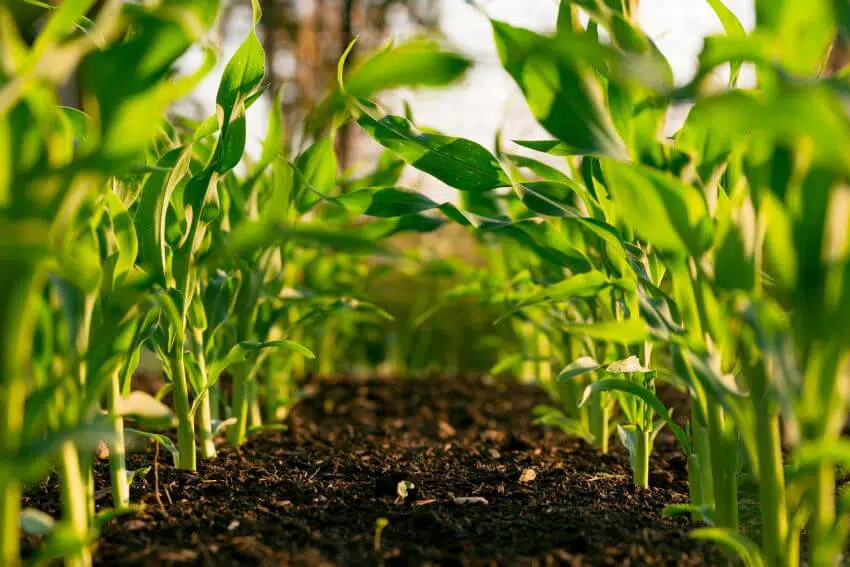
One of the major impacts that come from corn production is water and soil pollution. Runoff from fertilizers and pesticides can cause problems in rivers, lakes, and coastal areas. When it rains, the nitrogen fertilizers and pesticides on the ground used by some farmers can be carried as runoff into nearby waterways. Contaminating natural resources.
This runoff often contains high levels of nitrogen, nitrous oxide, and phosphorous, nitrogen pollution contributes to algal blooms and invasive weed growth that destroys aquatic life. This is why corn production contributes to pollution.
In addition, soil erosion is a major issue with corn production. The large-scale monoculture used to plant corn overwhelms the ability of the soil to replenish itself after a harvest. This often results in heavy nutrient runoff into bodies of water as well as reducing the amount of valuable topsoil that can produce a good corn crop.
See Related: Best Conservation Books to Read
How does corn production contribute to climate change?

Corn production is also a major contributor to climate change. First of all, the farm equipment used on large corn farms often emits more greenhouse gas emissions like carbon dioxide than cars.
Additionally, nitrogen-rich fertilizers used for corn farming are known to be a major cause of nitrous oxide emissions, which are 300 times worse for the environment than carbon dioxide.
See Related: Are Paper Bags Compostable?
What is corn’s role in water pollution?

One impact that corn has on water pollution is runoff. When it rains, fertilizers and pesticides used on the crop are often washed into local water supplies. This contributes to massive algae blooms that can be very harmful to fish and wildlife as well as drinking water for people and cause threats to human health.
See Related: Important Water Flow Pros and Cons
What role does corn play in soil pollution?
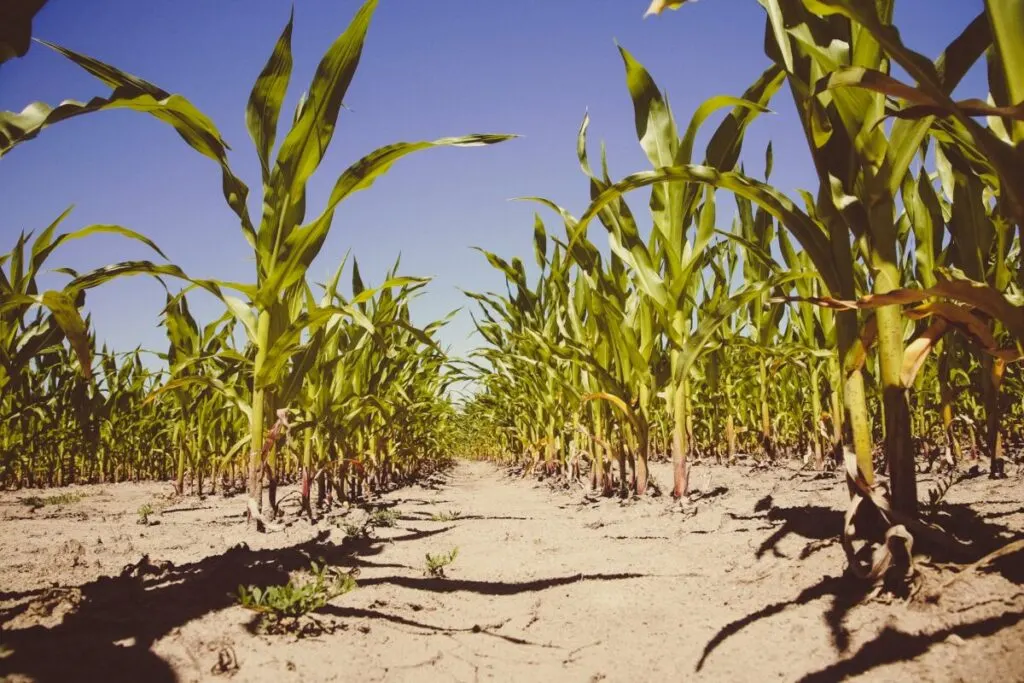
Large-scale monoculture also leads to a decrease in topsoil over time. This occurs when the land is planted in corn year after year with no cover crops between harvests. This has led to massive soil erosion and sediment runoff.
See Related: How to Be An Environmentalist?
How does corn production affect wildlife?

Another impact that corn production has is on wildlife. Monoculture allows weeds and pests to flourish. This can result in a large amount of pesticide intake by wildlife, which is particularly harmful to birds who rely on insects as a food source.
Invasive weed species such as palmer amaranth and marestail have become problematic for farmers since the 1990s. As a result, more chemical herbicides are used to combat these weeds. This contributes to the contamination of local water supplies and air quality issues for nearby communities.
See Related: Importance of Wildlife Conservation
How can corn production be made better for the environment?
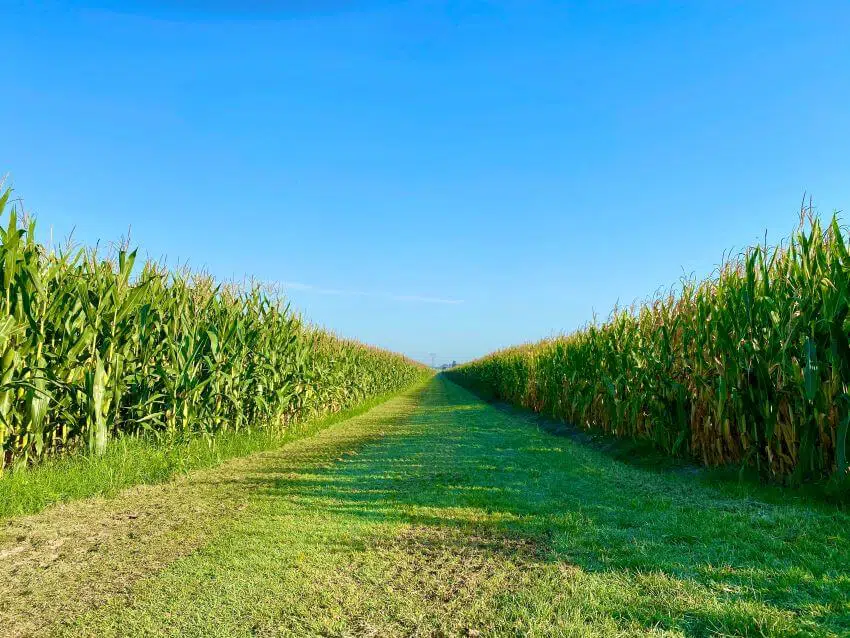
Experts in sustainable agriculture recommend that corn producers use no-till practices and grow corn naturally. These involve leaving parts of the previous year’s corn crop on the ground after harvest, with minimal disturbance to the soil and corn system.
This allows some nitrogen to remain in the soil, while also preserving topsoil and reducing runoff. In addition, planting cover crops between corn harvests also helps improve the soil.
While it is true that modern corn farming practices are bad for the environment, many experts agree that there are steps producers can take to reduce the impacts of their farms on the environment.
One of these would be using no-till farming methods instead of tilling up all the previous year’s corn stalks, which greatly reduces erosion and runoff. Another would be to use cover crops between harvests instead of plowing the soil each time.
Genetically modified organisms are responsible for contaminating organic farms around the world with their genetically-modified genes that have caused widespread devastation and bacterial growth to non-GMO & organic crop farmers in many countries.
GMOs are banned in many countries around the world, but are widely used in many countries and not labeled as such.
See Related: Best Clothing Companies That Plant Trees
How many corn crops are being produced globally?

Approximately 1.02 billion hectares of corn were produced globally in 2013 for a total production level of 975 million metric tons. This was about 4 percent greater than the production levels seen in 2012 and represents 80 percent of all global crops of corn produced that year.
See Related: Solar vs Wind Energy: What’s the Difference?
What countries produce the most corn?

The United States is by far the largest producer of corn, accounting for 42 percent of the global production in 2013. The Corn Belt region of the U.S. produces the most corn in their country. Next was China at 25 percent and Brazil with 15 percent of global corn produced that year. Other countries that produced corn that year include:
- Argentina – 9 percent
- India – 4 percent
- Ukraine – 3 percent
See Related: Best Erosion Control Products
What is the status of the environment when it comes to corn production?

Corn production is one of the major contributors to environmental pollution in many countries. This includes water and soil contamination from runoff containing fertilizers and pesticides.
Corn production is also one of the biggest contributors to climate change due to the equipment used in monoculture farming which release greenhouse gases. Finally, GMO corns are contributing to widespread contamination of non-GMO & organic farms around the globe.
See Related: Is Resin Bad for the Environment?
What are the main usages of corn?
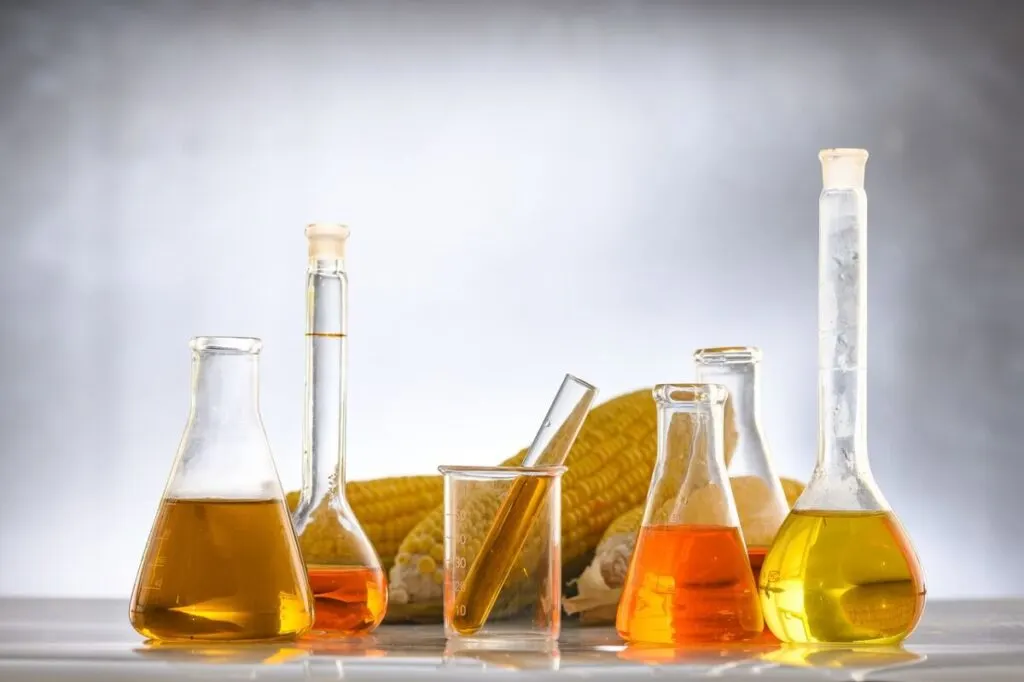
The main use of corn is as a cereal grain for animal feed and ethanol production. It is the third most-produced crop in the world, behind wheat and rice. Besides producing corn-based ethanol, it can be used to produce starch which can eventually become sweetener products like high fructose corn syrup.
See Related: Best Eco-Friendly Glitter Alternatives
What are some alternatives to corn?

Instead of having large monoculture crops like corn, turning to other methods such as crop rotation can help balance out soil nutrients.
Also using cover crops that can be planted in between corn harvest periods can help reduce soil erosion. Some other alternatives to large-scale corn production include small-scale traditional farming and adapting a permaculture style of growing food.
See Related: Amazing Sustainable Swimwear
What are some alternatives for high fructose corn syrup?

High fructose corn syrup makes up about 40 percent of all sweeteners used in the United States. There are many alternatives that people can use to reduce their intake including fresh fruit or natural sweeteners like honey, pure maple syrup, and molasses.
See Related: Can you Put Banana peels in Compost?
What are some alternatives for animal feed?

Some alternatives for animal feed can be to buy items that are locally grown. Buying locally not only reduces carbon emissions associated with transport but also may reduce the reliance on corn for food production.
Another way to reduce farm emissions is to eat lower on the food chain by using more plant-based foods in place of meat whenever possible.
See Related: Best Books on Pollution
Advantages of corn production

- Can be used to make ethanol fuel, fossil fuels, renewable fuel standard
- Makes up 4 percent of global agricultural production
See Related: Best Palm Oil Free Soap
Disadvantages of corn production

- Corn is a major contributor to climate change by equipment used during monoculture farming.
- Besides producing ethanol, it is also used to produce high fructose corn syrup which is an unhealthy sweetener found in many foods.
- GMO corn crops are causing widespread contamination to non-GMO & organic corn farms in countries like the United States.
See Related: Is Rainwater Harvesting Worth it?
Impact of corn production on the environment
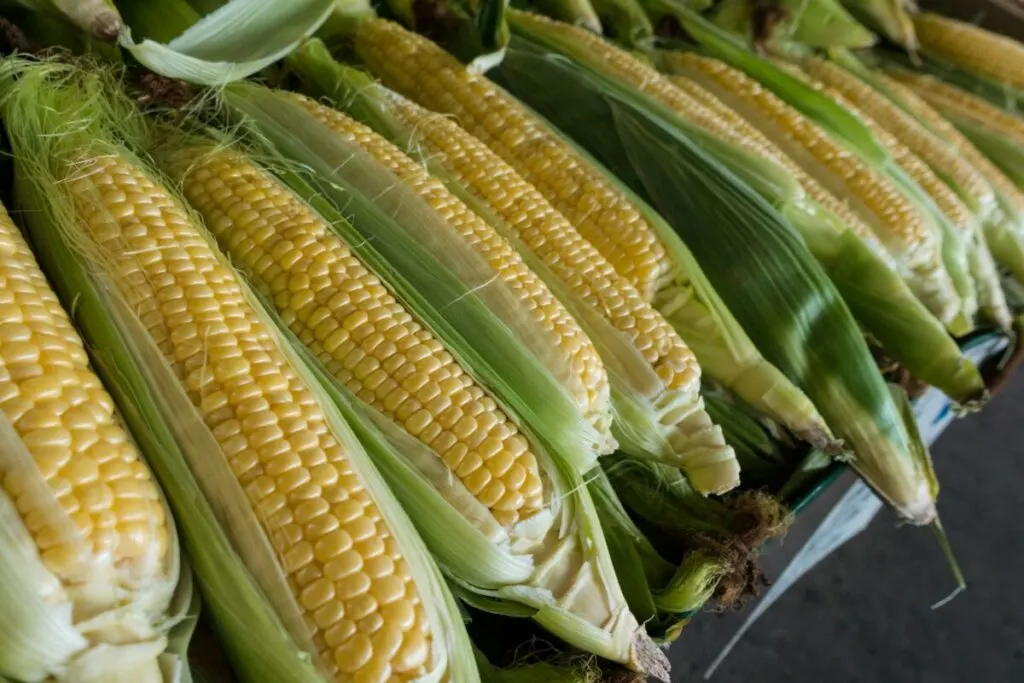
- Contamination from runoff containing fertilizers and pesticides
- Contributing to climate change due to equipment used for monoculture corn farms.
- Greenhouse gas emissions like carbon dioxide of equipment
See Related: Best Energy Efficient Electric Fireplaces
Alternative solutions
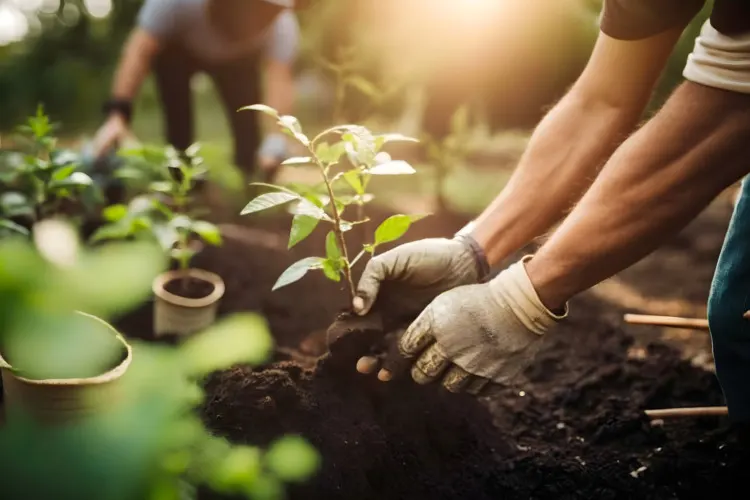
- Using crop rotation to balance out soil nutrients
- Cover crops can be planted between corn harvest periods
- Small-scale traditional farming & adapting a permaculture style of growing food.
- Planting other crops instead
- Grow corn naturally
See Related: Best Composting Books You Need to Know
Advantages of alternatives

- Can be locally grown corn and therefore reduce carbon emissions from transportation.
- Lower the food chain which can reduce reliance on corn for food production.
- May reduce the use of high fructose corn syrup in foods by replacing it with natural sweeteners like honey, pure maple syrup, molasses.
See Related: Are Coffee Filters Compostable?
Disadvantages of alternatives

- Can be difficult to find locally produced items depending on location.
See Related: Is Cardboard Biodegradable?
Impact of alternatives

- Low impact on the environment.
See Related: Climate Change Jobs Around the World
Can we survive with less corn production?
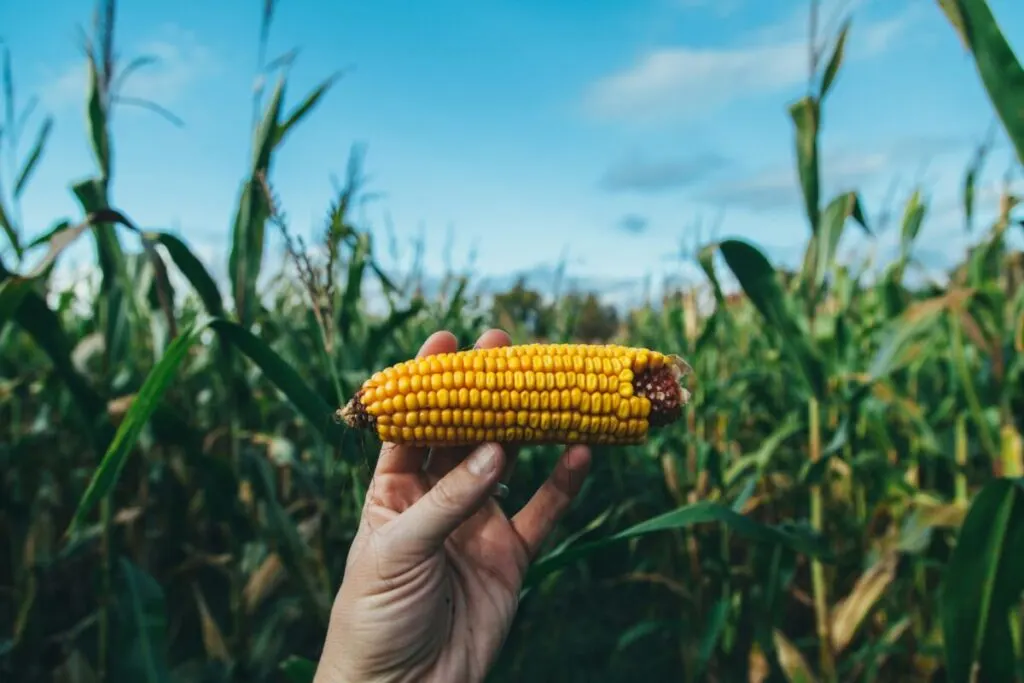
Yes, there is no need for large-scale corn production. Small scale traditional farming or adapting a permaculture style of growing food is more sustainable for the environment. By using small-scale traditional farming or permaculture-style growing food, there is less impact on the environment.
We can survive with less corn production while preventing environmental costs. It will reduce climate change caused by equipment used in monoculture farming. Also, GMO corn production is causing widespread contamination of non-GMO & organic farms around the globe.
See Related: Best Tesla Powerwall Alternatives to Buy Today
Conclusion
Corn production can be bad for the environment in a few different ways. Corn takes up a lot of pollinating bees, also called Tests or honeybees. It uses a lot of fertilizer to grow and produce year after year which results in agricultural runoffs.
It consumes significant amounts of water without yielding high productivity in comparison with most other grains.
A study from 2006 produced estimations that corn production alone may consume more than 10 percent of global freshwater supply per day.
In which is not an insignificant amount when one considers future projections on population growth and competition for this resource-driven by climate change-driven droughts and changing weather patterns driven by climate change.
See Related: Pros and Cons of Biomass Energy
Final Thoughts
Corn production is already part of our everyday lives, but proper and natural farming systems of corn should be implemented to stop environmental impact, all farmers should grow corn naturally for us to consume something natural and healthy.
Eating something genetically modified would cause a major risk factor on our health and remove important nutrients from the food. If we can consume and use other crops instead of corn for our food system, why not.
Related Resources
